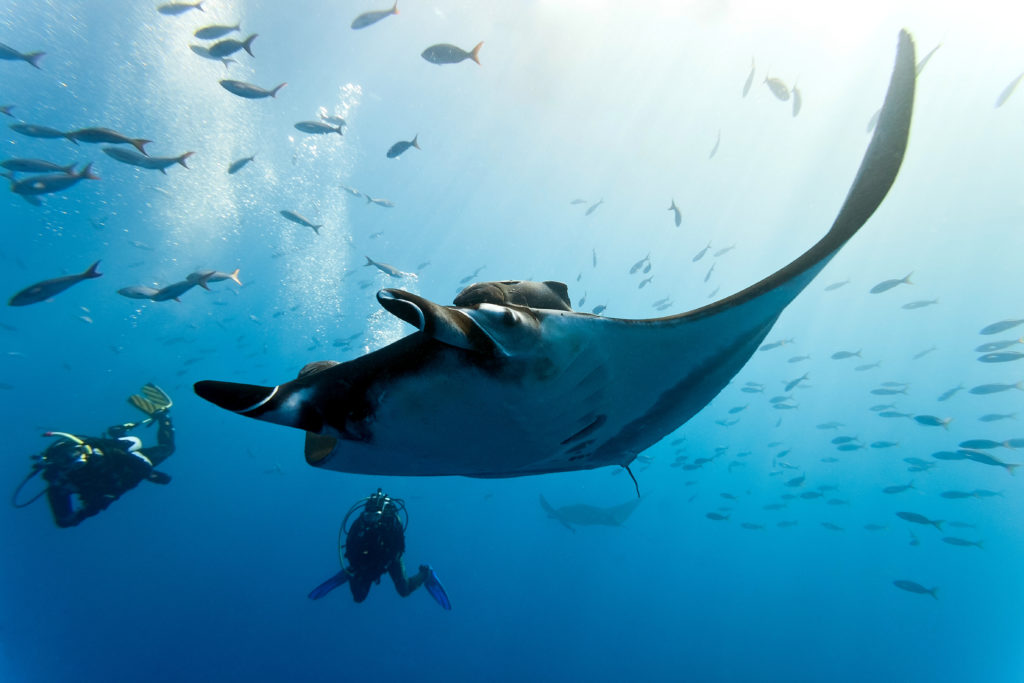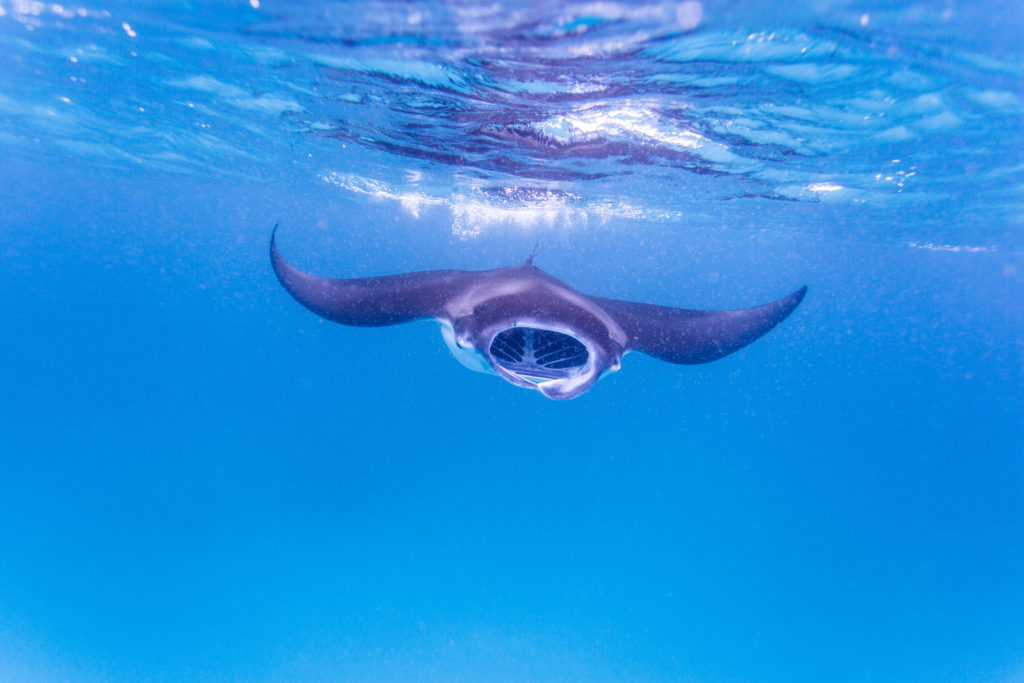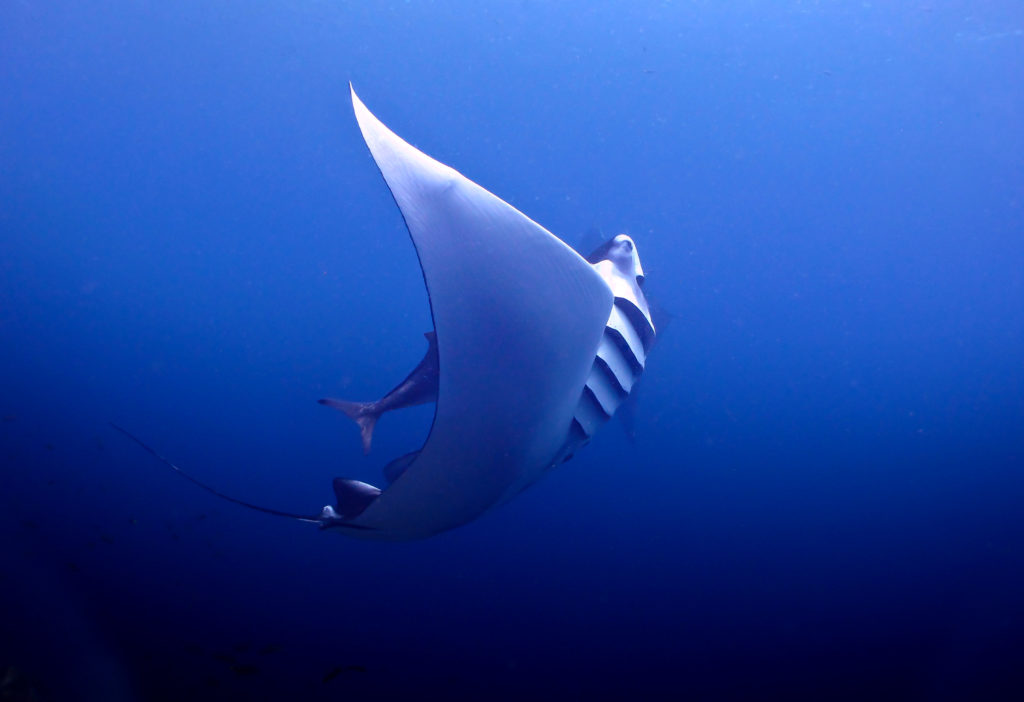Manta rays hold a place on many — if not all — divers’ bucket lists. But not every diver knows that there are not one, but two, species of mantas, or that they feed only on plankton. Check out the facts we’ve compiled below for your manta crash-course.
What are manta rays?
Manta rays belong in the same family as other rays, such as the mobula. They’re in the subclass elasmobranchii, which includes all other rays as well as sharks. Mantas first appeared in the fossil record 4.8 million years ago, although fossils further suggest that mobulas have been around in some form for 20 to 25 million years.
Scientists only recently discovered that there are two different species of manta rays: Manta alfredi (reef manta) and Manta birostris (oceanic manta). Oceanic mantas can reach up to 23 feet (7 m) wide, while the reef manta is usually smaller. There are other visual differences as well, such as color patterns, dermal denticles and dentition. All of them carry markings on their bellies that are unique to each animal, much like fingerprints on humans. Both species feed on plankton, and are often seen by divers at cleaning stations, where the rays come to have parasites removed by cleaner wrasses.

Are they threatened?
Mantas do not have a lot of natural predators, only big sharks and orcas. Humans, unfortunately, pose the biggest threat to mantas. They reproduce quite slowly: research has shown that they do not reach sexual maturity until around 15 to 20 years. Mature females usually carry only one pup at a time and give birth after a gestation cycle of about a year. The newborn manta is already over 3 feet (1 m) wide and ready to swim on its own. Researchers believe that mature females carry a pup only every two to five years.

Fishing nets, boat traffic and the trade in their gills for traditional Chinese medicine are the main threats to mantas. Fishermen target them around the world for their gills, leading to drastic reductions in populations.
CITES Appendix II listed manta rays in 2013, which means that their trade is banned internationally. The CMS (Convention of Migratory Species) also lists them as threatened. Some countries have implemented local protection in recent years, where fishing and/or exporting manta rays is illegal, including Indonesia, Ecuador, Peru, Mexico and the Philippines. There are also a number of organizations working for their protection and identification.

Where are they and how can I dive with them?
When divers encounter mantas, they report that the animals seem quite inquisitive. By staying still and close to the bottom, divers can sometimes enjoy very close encounters with them. As with any other underwater creature, do not touch them: manta rays have protective mucus on their skin and your touch will remove it.
Divers can see mantas in quite a few areas — the Maldives, Kona (Hawaii), Indonesia, Ecuador, Mozambique and the Galapagos are some of the best bets. Check the season before you book your manta-watching dive trip so as to make sure your timing is correct. To learn more about these beautiful “birds of the sea,” check here.

